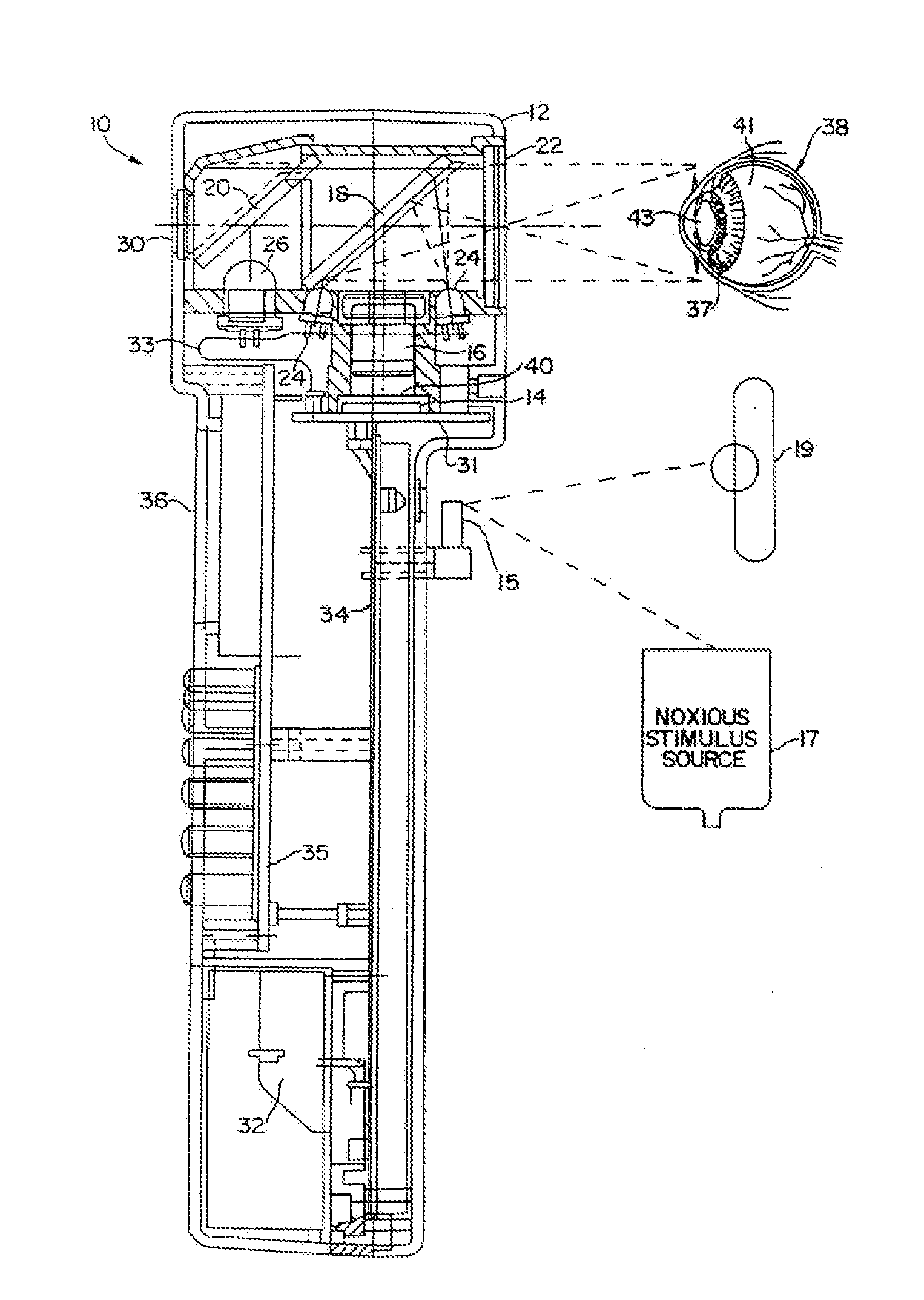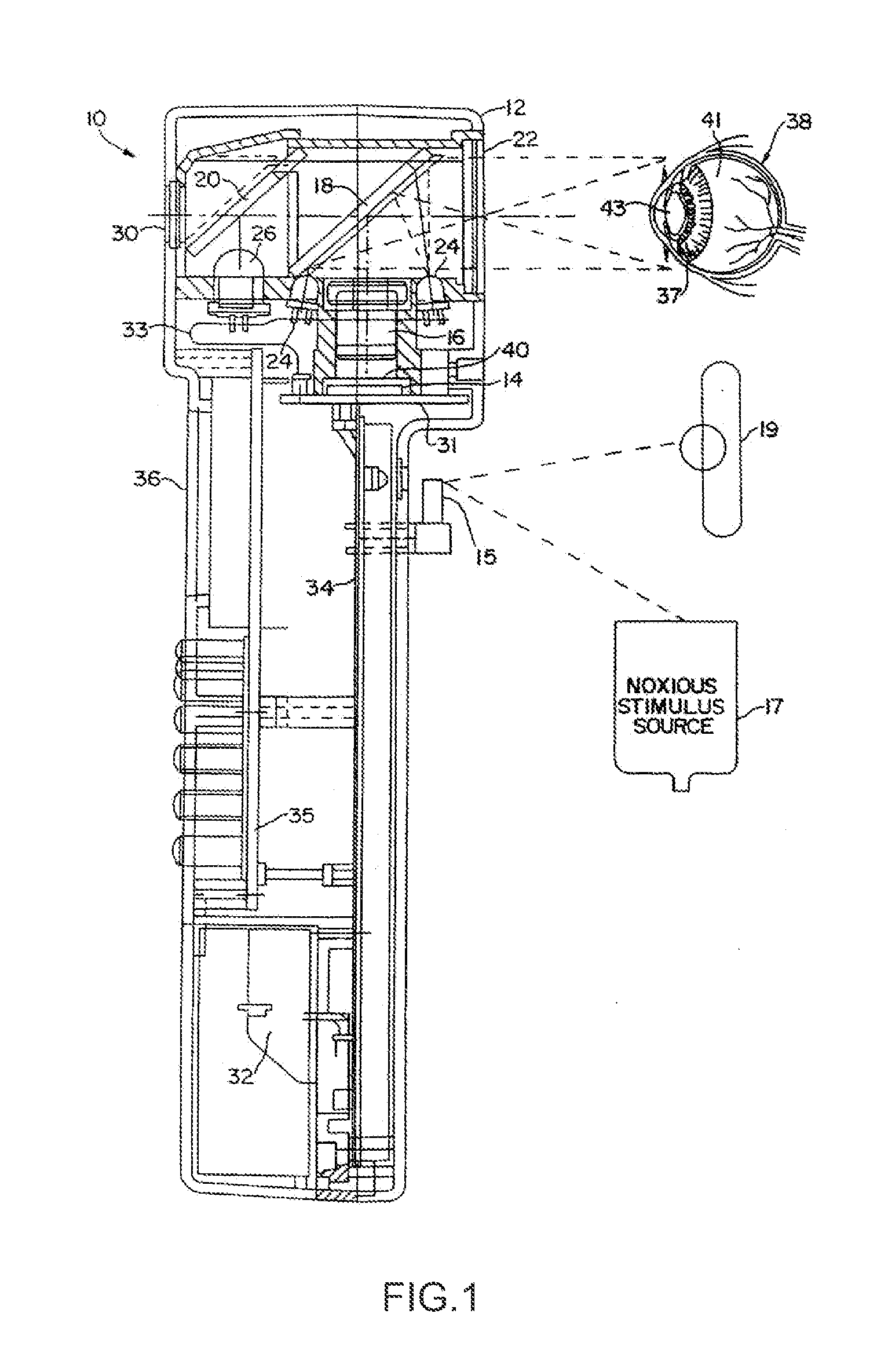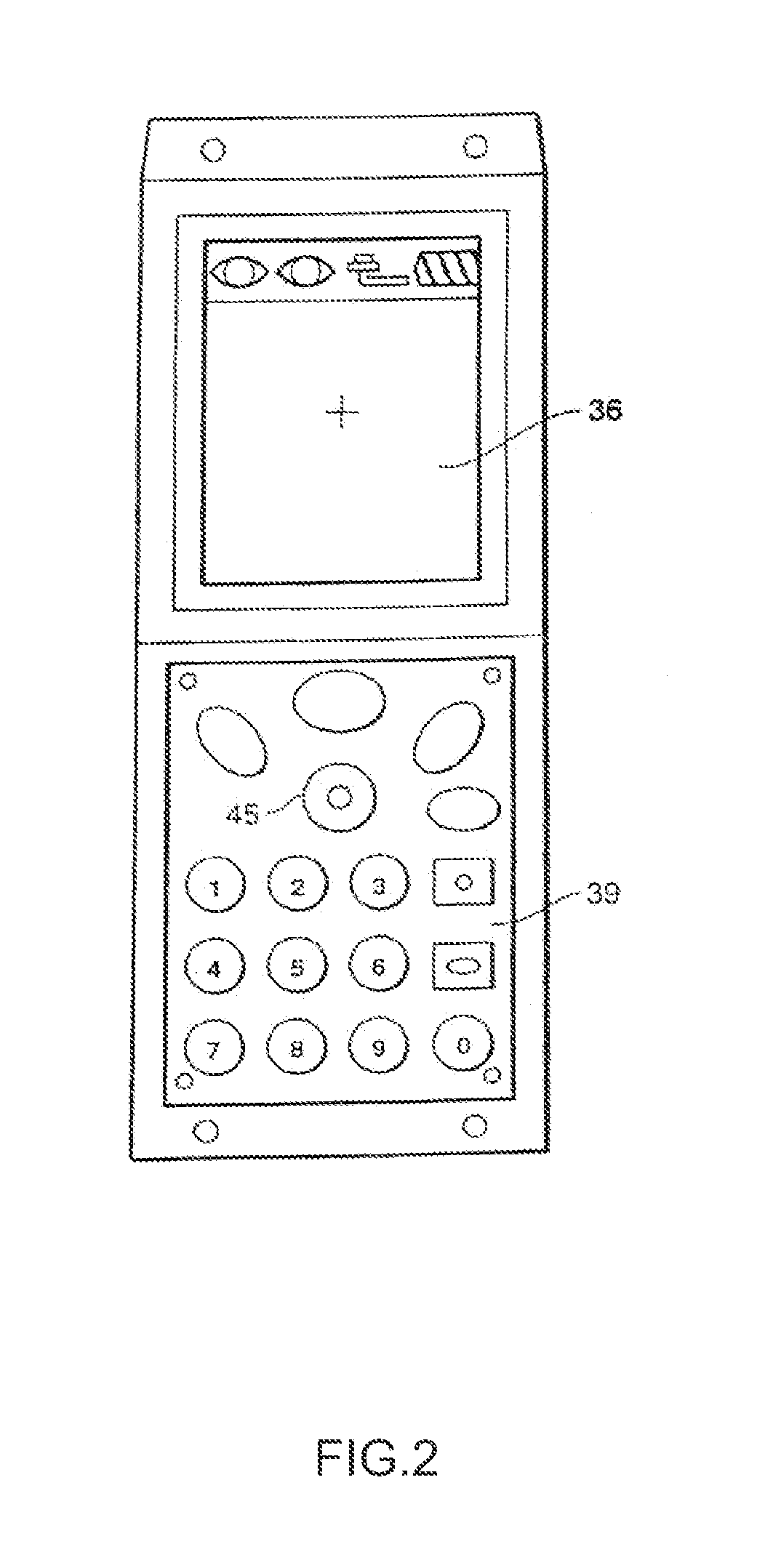Pupilary Screening System and Method
a screening system and pupil technology, applied in the field of pupil irregularity detection, pupil tracking, pupil response detection capability, etc., can solve the problems of inability to accurately diagnose, difficulty in positioning an imager, human/patient error,
- Summary
- Abstract
- Description
- Claims
- Application Information
AI Technical Summary
Benefits of technology
Problems solved by technology
Method used
Image
Examples
Embodiment Construction
[0035]A. Hardware Components of a Pupilometer in Accordance with the Present Invention
[0036]Turning now to the drawings, FIG. 1 provides a cross-sectional view of a hand-held pupilometer 10 in accordance with the present invention. FIG. 2 provides an illustration of a liquid crystal display and key pad that may be provided on the hand-held pupilometer 10, and FIG. 3 is an enlarged cross-sectional view of an imaging section of the hand-held pupilometer 10.
[0037]As shown in FIGS. 1-3, the pupilometer 10 preferably includes a housing 12 wherein an imaging sensor 14, an objective lens 16, first and second beam splitters 18 and 20, a shield 22, four infrared (IR) LEDs 24, two yellow LEDs 26, a blue LED 28 (shown in FIG. 4), a reticle 30, a battery 32, an image signal processing board 34 and a liquid crystal display 36 are mounted. Stated somewhat differently, the pupilometer may comprise a viewing port (reticle 30 and shield 22), an imaging system (objective lens 16, imaging sensor 14 an...
PUM
 Login to View More
Login to View More Abstract
Description
Claims
Application Information
 Login to View More
Login to View More - R&D
- Intellectual Property
- Life Sciences
- Materials
- Tech Scout
- Unparalleled Data Quality
- Higher Quality Content
- 60% Fewer Hallucinations
Browse by: Latest US Patents, China's latest patents, Technical Efficacy Thesaurus, Application Domain, Technology Topic, Popular Technical Reports.
© 2025 PatSnap. All rights reserved.Legal|Privacy policy|Modern Slavery Act Transparency Statement|Sitemap|About US| Contact US: help@patsnap.com



